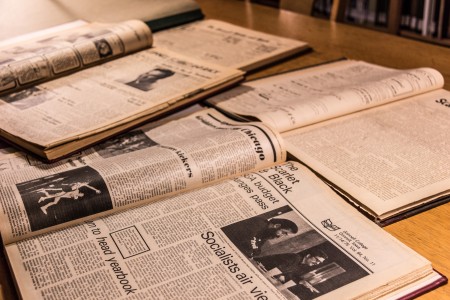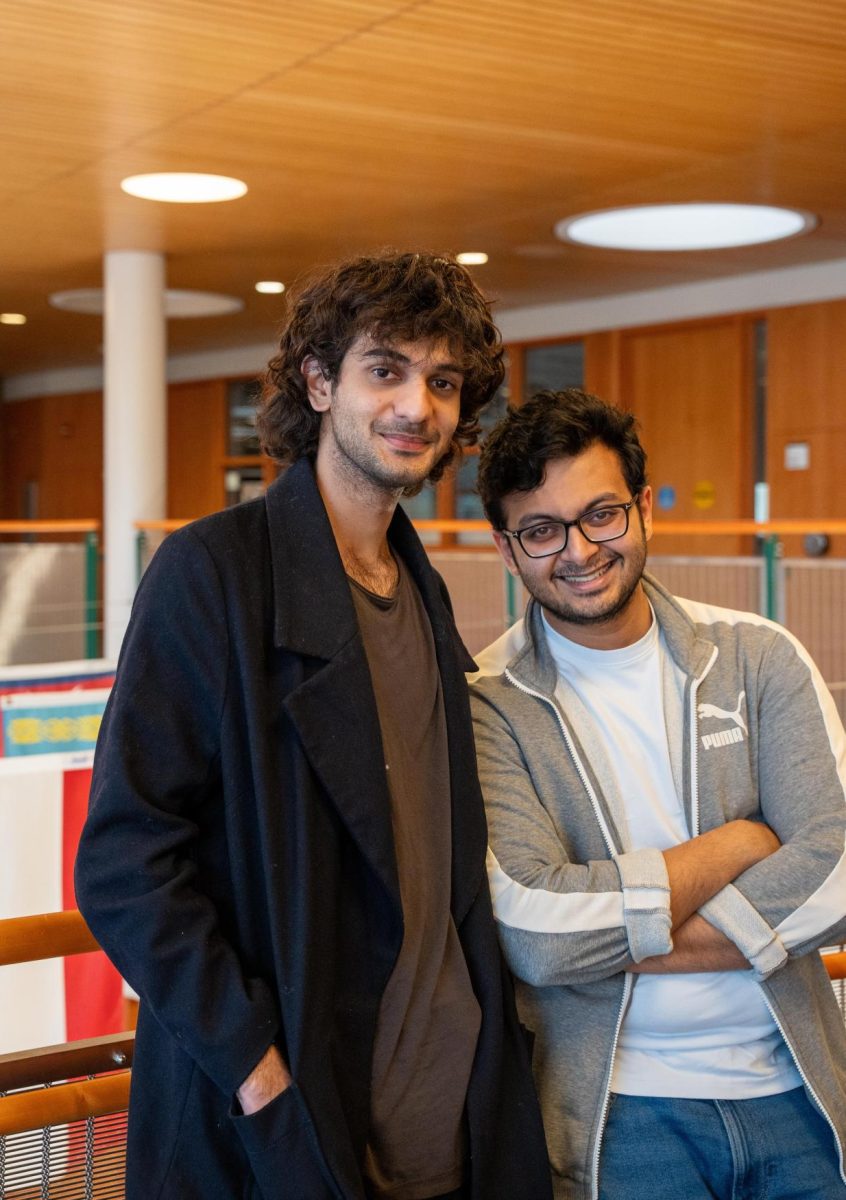For the first time, The S&B will be completely digitally archived and available online, with volumes dating back to the first issue printed in 1894.
Many of Grinnell’s peer institutions have already digitized their newspapers and Richard Fyffe, the Samuel R. & Marie-Louise Rosenthal Librarian of the College, had been eyeing the project for years. The problem was a lack of funds since money was needed to contract a digitizing company.
Last semester, he noticed funding might be available.

Photo by Rachel Neubauer.
“What enabled this to happen were some lower than anticipated subscription costs for [academic] databases and as we realized that had happened at the end of last year, we decided to take the extra money that wasn’t going to be to needed for those subscriptions, to contract for having the newspapers digitized,” Fyffe said.
Fyffe worked with Special Collections Librarian and Archivist of the College Chris Jones on the project. In late spring, they chose to contract ArcaSearch, a company that digitizes documents and hosts them in an accessible database.
Fyffe formed the brainchild of the idea, but it was Jones who completed much of the work over the summer producing the final product. Burling Library keeps archived issues of The S&B in the Department of Special Collections and Archives and the librarians evaluated the bound copies held there to determine which hard copy of each issue was the best candidate for digitization.
“We boxed them up and borrowed a company van and I drove them to Minnesota, where [ArcaSearch] is,” Jones said. “They did their digitization magic, and I drove up later and picked them up when they were done.”
Every issue, save for a handful from the mid-1890s, which will be added soon, are available on the database.
Vice President for Communications Jim Reische expressed excitement for the project, calling it a “treasure trove” and noting that alumni, students, faculty and staff will be able to explore details of the College over the last 120-plus years.
“The S&B is the best record that the College has of the day-to-day life on this campus,” he said.

Photo by Rachel Neubauer.
The database will have considerable practical applications as well. Library employees, who, in the past, often spent their time searching through hardcopies of The S&B to answer questions for people researching Grinnell’s history, won’t be called upon as heavily to research.
Additionally, the Communications Office hopes to use the database to highlight historical moments from The S&B in school publications and social media.
Currently, the database will only include newspapers published up until May 2010. The reason for this is to allow recent graduates to explore the workforce without worrying if employers can discover articles they have been featured in that may be unprofessional. Articles published in The S&B since 2010 are available at www.thesandb.com, however.
In another precautionary measure, the database will not be crawled by any search engine, meaning that Google searches won’t show results from the database. To find a story on a particular person or subject, an employer would need to search the database itself.
“We think that’s a good balance between providing open access to this information and respecting privacy because most employers are going to do a Google search, but they’re probably not going to make the extra step of going to the school newspaper site,” Fyffe said.
“Right away, I don’t think that there’s much risk of employers finding anything incriminating about potential employees,” said The S&B’s co-Editor-in-Chief Stephen Gruber-Miller ’15.
Gruber-Miller and fellow co-Editor-in-Chief Emma Sinai-Yunker ’15 worked with the librarians to establish a policy statement of how the archive would be presented in a way that maintained the historical record, but was also sensitive to real-world desires of graduates.
Another issue in the process was a question of intellectual property. Did the students or the College have ownership over The S&B? Reische said that technically, the College has the right. Even so, the permission and concerns of the current Editors-in-Chief were taken into account during this process.
“The really nice aspect of this is the fact that the College and students can work together and do something really cool, without a lot of fuss. By college standards this happened pretty quickly,” Reische said. “We do hope people will go to it and explore it. We’re certainly going to mine it and share the fun stuff that we find.”
The freely accessible database is open to the public today at http://usiagrc.arcasearch.com/Research.aspx.

























































Diane Alters • Oct 3, 2014 at 3:09 pm
Excellent article on an excellent move to digitize The S&B. Congratulations!